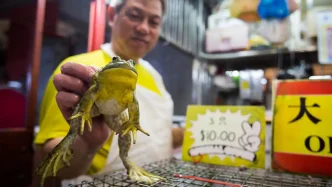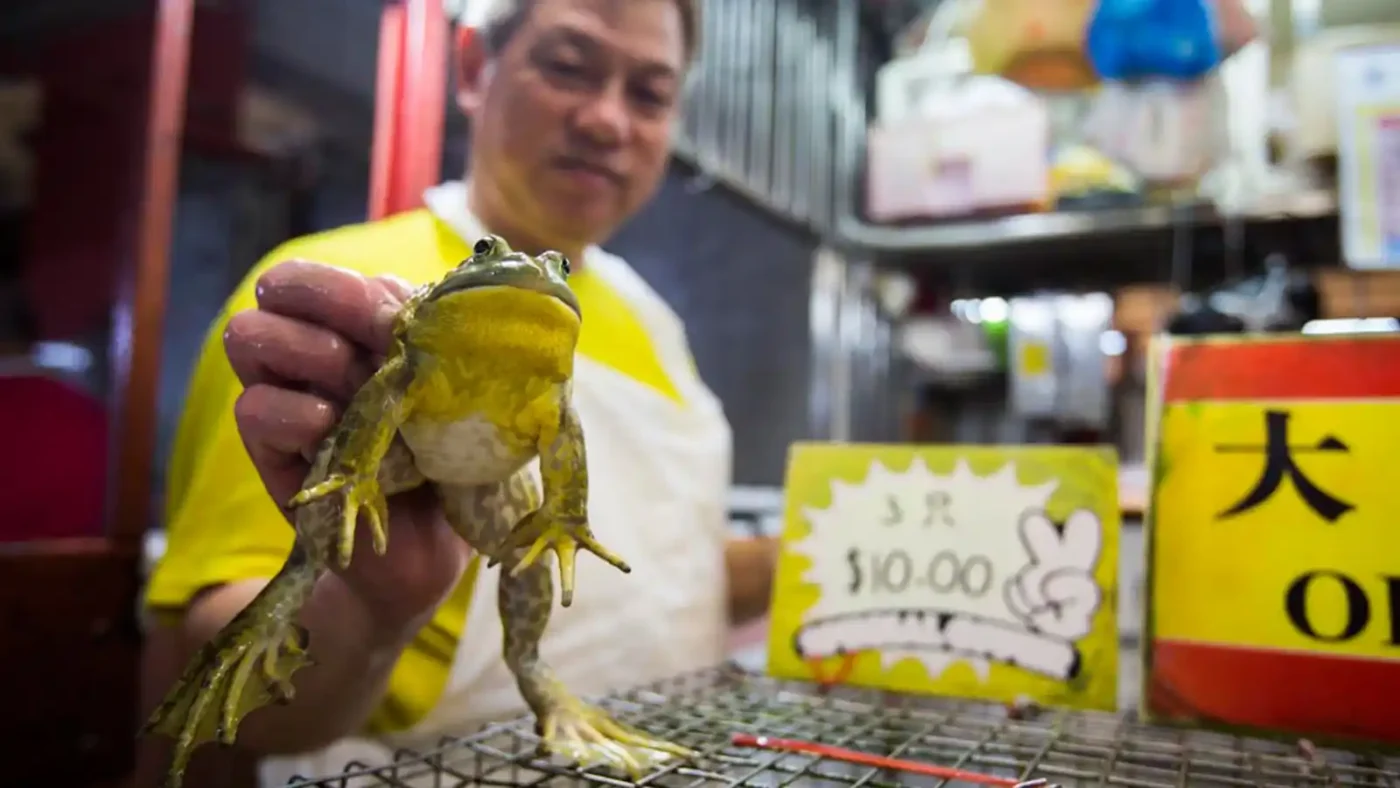In the heart of Singapore’s Chinatown Complex, brothers Marcus and Max Tay stand out among the weathered stalls of the city’s largest wet market. In their 20s, they are a rare breed of young hawkers, running The BeefFellas, a stall offering premium Japanese wagyu beef, sliced and vacuum-sealed on-site. Since starting their business in November 2024, they’ve drawn a diverse clientele with their modern approach—blending personal service with an online presence. But their presence raises a broader question: can Singapore’s wet markets, long a bastion of tradition and community, adapt to a rapidly changing world, or are their days numbered?
A Generational Shift in the Stalls
Wet markets have been a cornerstone of Singaporean life for decades, offering fresh produce, meats, and herbs alongside a unique sense of community. Yet, the demographic landscape of these markets is shifting. According to the National Environment Agency (NEA), which oversees 83 markets, the median age of stallholders is now 63. Many customers, too, are over 60, reflecting a generational divide as younger Singaporeans turn to supermarkets and online retailers for convenience.
Occupancy rates remain strong at 96 percent over the past five years, but the NEA acknowledges evolving consumer habits. The agency continues to evaluate community needs before building new markets, with the most recent, Fernvale Hawker Centre and Market, opening in 2022 with just 20 stalls. Meanwhile, the Housing and Development Board (HDB), which manages 17 wet markets, has seen some converted into supermarkets to meet changing demands since their construction in the 1990s.
For young vendors like the Tay brothers, breaking into this aging trade offers both challenges and opportunities. Marcus, 29, leverages his fluency in Japanese and butchery experience to attract a niche clientele, while their affordable rent—about 900 Singapore Dollars (US$670) for three stalls—makes the physical market viable. “We remember customers’ names and their preferences” said Marcus, highlighting the personal touch that sets them apart. Their youth also draws attention, with older patrons like Peggy Tan, 72, expressing support: “We must support young people in this trade. It’s so rare.”
Digital Innovation as a Lifeline
While physical stalls remain vital for older customers, younger vendors are increasingly turning to digital platforms to stay relevant. The Tay brothers supplement their in-person sales with online orders and deliveries, catering to a younger demographic. Similarly, Delonix Tan, a 27-year-old third-generation fishball maker at Kim Keat Palm Market, has built a significant online following—over 20,000 on Instagram—by launching a website and promoting his handcrafted products made from yellowtail fish.
At Block 724 Ang Mo Kio Central, Al-Masyhur, a halal meat and seafood stall, has seen online sales surpass in-store purchases by 50 percent through weekly live-streams. “While our physical stall still attracts older, long-time customers, we’ve found new momentum online” said social media manager Firuz Ali Khan. Jeya Spices in Yishun, run by 35-year-old J. Jeyaseelan, has also embraced platforms like TikTok, reporting a 20 percent business growth since 2020 by targeting younger customers eager to cook with traditional spices.
For customers like Fatmah Khan, a 22-year-old freelance writer, this digital shift is a game-changer. She recalls ordering ketupat for Hari Raya through a TikTok promotion, noting how seamless the process was. Such innovations suggest that technology could bridge the generational gap, ensuring wet markets remain relevant in a digital age.
Challenges of Tradition in a Modern World
Despite these adaptations, significant hurdles remain. Wet markets typically operate from early morning to noon, a schedule that clashes with the lifestyles of younger, working Singaporeans. Associate Professor Lyle Fearnley from the Singapore University of Technology and Design points out that supermarkets, often open late or 24/7, better cater to busy schedules. Extending hours could help, but it risks increasing operational costs for vendors already grappling with tight margins.
Infrastructure is another concern. Many wet markets lack the modern amenities of supermarkets, such as air-conditioning, which could deter younger patrons. Professor Lawrence Loh of NUS Business School cautions that while upgrades like air-conditioning could attract customers, they would likely raise rents and prices, potentially alienating the very communities these markets serve. He questions whether public funds should be used to sustain a “fading sector,” suggesting wet markets may naturally decline over time.
Yet, government initiatives offer some support. The Hawkers’ Productivity Grant helps vendors purchase equipment to boost efficiency, while the Hawkers Go Digital program subsidizes e-payment adoption. A one-off rental support of 600 Singapore Dollars (US$447) per stall, rolled out from April 2025, celebrates Singapore’s diamond jubilee and the UNESCO recognition of hawker culture. HDB has also frozen rents for five years to keep costs manageable for operators.
A Cultural Ecosystem Worth Preserving
Beyond economics, wet markets hold profound cultural value. Professor Lily Kong, president of Singapore Management University and a researcher of hawker culture, describes them as “vibrant cultural ecosystems” that foster community bonds, especially for older generations. For seniors, these markets are not just places to shop but spaces of belonging and routine, where social connections are nurtured over daily interactions.
At Chinatown Complex, vendors like He Xiao Ying, a 53-year-old fourth-generation owner of Bai He Herbs, embody this spirit. Her stall, known for medicinal herbs and personalized health advice, retains a loyal clientele despite fewer young customers. Similarly, Horace Khoo, 47, continues his mother’s legacy at Chinatown Yong Tau Foo, emphasizing quality and service. “I always maintain good quality of my items” he said, a commitment echoed by regular customer Lawrence Tan, 58, who values the freshness of handcrafted goods.
With Singapore’s aging population, Professor Kong argues for reimagining retail spaces as social hubs for seniors. Wet markets, with their inherent community focus, are uniquely positioned to meet this need, offering a counterpoint to the impersonal efficiency of supermarkets and online shopping.
The Road Ahead for Wet Markets
The future of Singapore’s wet markets hinges on balancing tradition with innovation. Young vendors like the Tay brothers and Delonix Tan demonstrate that digital engagement and niche offerings can attract new customers while preserving the markets’ personal touch. Government support, from grants to rental freezes, provides a buffer, but broader challenges—operating hours, infrastructure, and shifting demographics—require creative solutions.
Associate Professor Lau Kong Cheen of the Singapore University of Social Sciences suggests a government-led framework to help vendors upgrade their business models through technology and branding. Yet, as Professor Loh warns, propping up a sector in natural decline may not be sustainable. The question remains whether wet markets can evolve without losing their cultural essence.
For now, the stalls of Chinatown Complex and beyond continue to bustle with life, a testament to their enduring appeal. As Singapore navigates its modern identity, the fate of these markets will reflect broader tensions between progress and heritage. Will they adapt to thrive in a digital era, or fade into memory as a cherished but outdated relic? Only time, and the next generation of hawkers, will tell.
















